Biodiversity action plans
Our principle: preserve and protect
Climate action Nature Biodiversity
In the Iberdrola Group, we manage aspects related to biodiversity through four priority lines of action: protect, study, and preserve, raise awareness and inform, and collaborate with stakeholders.
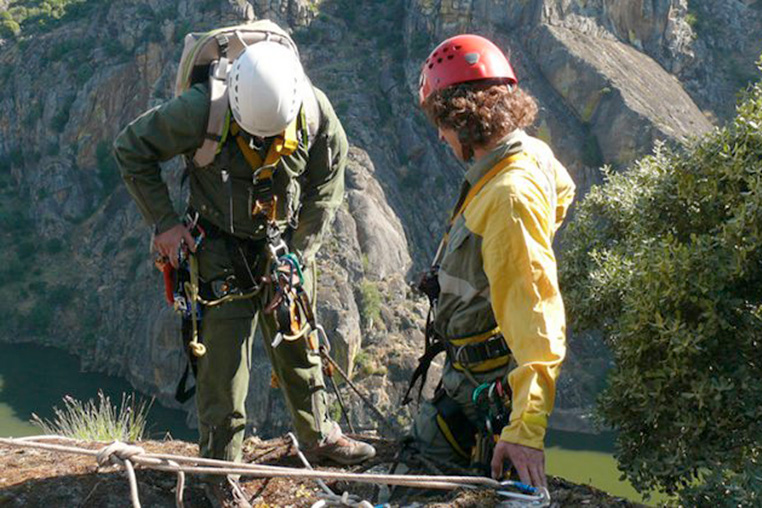
Census of Bonelli's eagle chicks in the Arribes del Duero natural park as part of the protection plan for the species in Castile and León.
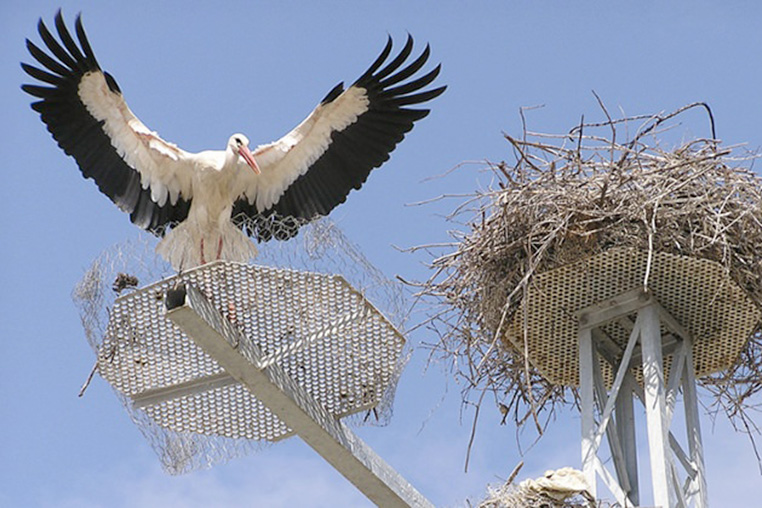
Protection of birdlife in Extremadura. Census of Bonelli's eagle chicks in the Arribes del Duero natural park as part of the protection plan for the species in Castile and León.
Iberdrola has an action plan for managing aspects related to biodiversity while following the basic action principles defined in the Biodiversity Policy. This plan implements four priority lines of action:
- Protect biodiversity, and make sustainable use of natural capital by applying the mitigation hierarchy with a conservation approach, using best practices throughout the life cycle in the management of such facilities and promoting actions for the regeneration and conservation of natural heritage.
- Understand and conserve biodiversity, continuously identify, quantify and assess the impacts and dependencies of the Group's activities on natural capital with a focus on biodiversity throughout the life cycle of the facilities by promoting research and improving knowledge of the ecosystems in the areas where it operates.
- Collaborate with Stakeholders, considering their needs and expectations in matters of biodiversity in order to integrate them into action plans and participate in research projects.
- A commitment to raise awareness of the importance of biodiversity and communicate internally and externally about the impact of our biodiversity conservation activities and actions.
Iberdrola has been working on biodiversity programs and plans on an ongoing basis for many years, following the above lines of action. In June 2017, and as an example of this commitment to the conservation of natural environments, Iberdrola received an award from the General Directorate for the Environment of the Extremadura Regional Council for its conservation work in the Monfragüe National Park.
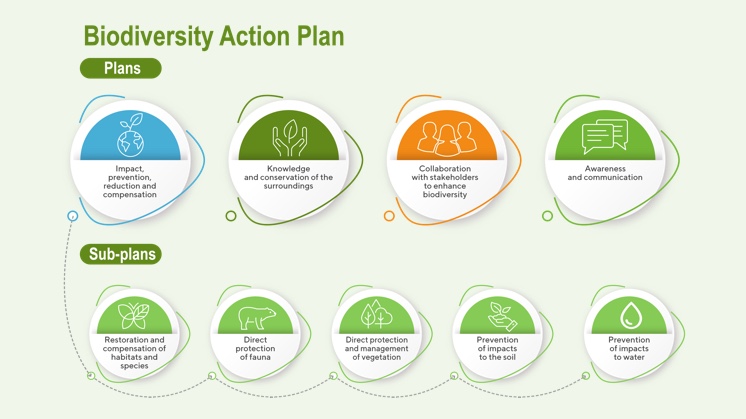
The following are examples of the Group's ongoing projects:
PROJECTS UNDERTAKEN
-
TECHNOLOGY ACTIONS OBJECTIVES Hydroelectric power plants Limnological control of the most eutrophicated reservoirs in the Tagus basins (pollutant loads contributed by agents unrelated to Iberdrola that travel along these rivers before they flow into the reservoirs). Prevent possible impacts on the ichthyofauna located downstream from the reservoirs. 10 activities aimed at the prevention of pollution: Construction and sealing of pits, replacement with dry transformers, strengthening of septic tanks, oil separators, substitution of lubricating oils with less polluting substances, maintenance and improvements to waste containment systems, etc. Prevention of pollution and its possible impacts on flora and fauna. Pruning and management of biomass for the prevention of forest fires. Fire prevention. Actions for the protection of flora and fauna: control of the reservoir level during the breeding season, fish rescue before emptying reservoirs for maintenance purposes, erection of anti-hunting fences, installation of sonic barriers for protection of the ichthyofauna, and ecological flow control. Protection and recovery of flora and fauna. Monitoring of the growth and spread of the invasive zebra mussel species. Invasive species control. Onshore wind farms Environmental Fauna Monitoring. Lists are drawn up to keep a record of birdlife and/or chiroptera and collision control measures are performed in 108 parks. Protection of birdlife and chiroptera. Study of the Golden eagle in the environment of the Maranchón Wind Farms Complex (Guadalajara). Photo-trap cameras were installed in 2020, a second golden eagle was tagged and two birds were radio-monitored. Golden Eagle Protection. Wind farm projects GPS tracking of vulture species at the Cavar wind farm over a 3-year period Birdlife protection. Photovoltaic projects During 2020, nest boxes were placed on selected supporting stands, with 33 nest boxes for the lesser and common kestrel being placed on all of the stands and additional boxes at various heights on selected stands. In total there were 50 boxes. Birdlife protection. Protection of a 40-hectare area of the Núñez de Balboa plant where the Montagu's harrier has been sighted, and where no photovoltaic panels will be installed, in order to ensure the successful reproduction of the species. Birdlife protection. Annual review of the insulation components of the overhead evacuation line and of the maintenance of the regulatory distance from vegetation. Avifauna protection and fire prevention. Thermal and Combined Cycle Projects Activities aimed at the prevention of pollution: construction of perimeter ditches, sealing of catch basins, waterproofing of floors and tanks, etc. Prevention of ground and water pollution. Control of the growth and spread of the invasive zebra mussel species with a chemicals minimisation programme. Invasive species control. Activities aimed at reducing waste generation, the amount of water withdrawn for cooling, the use of chemical products, noise, etc. Reduction of the amount of water collected, waste generated and noise emitted. Assessment of the ecological condition of the section of the Tagus River that receives discharge from the Aceca Plant, analysing biological, physicochemical and hydromorphological elements of quality. Greater understanding of the ecological condition of the river Tagus. Networks Preventive activities for preventing and mitigating the impact of possible spills. 10 deposits in substations have been built or repaired in 2020 to contain possible spills. Prevention of pollution. The Flash Project is helping to optimise vegetation management and the maintenance of power-line corridors by capturing images by helicopter using Lidar cameras. 26,804 km of power lines were inspected in 2020. Fire prevention. Improved Overhead Grid Project (formerly ALETEO), the objective of which is to adapt supports to protect avifauna. In 2020, 30,234 supports were adapted for avifauna. Reduced risk of collision and electrocution of avifauna. The FLORA Application was implemented in 2020 within the project to organise and improve the management of the vegetation on the streets with power lines. Improved vegetation management. -
ScottishPower Renewables (SPR), at the wind farms in the United Kingdom, uses the Biodiversity Conservation Strategy as a reference for both the development of new wind projects as well as existing ones, with a special concern for improving the environment (flora and fauna) of the facilities, and establishes Habitat Management Plans (HMPs) as a tool for each installation. This allows SPR to compensate or mitigate for any habitat lost through the construction of a site, and often provides additional enhancement. This requires SPR to work together with statutory bodies, including Scottish Natural Heritage, the Royal Society for the Protection of Birds and the Forestry Commission, to ensure that management complements national biodiversity aims and follows best conservation practice. These HMPs have different aims and targets depending on the characteristics and types of habitat, which is why a specific plan is produced for each affected area.
In addition the following specific actions are worthy of note:
TECHNOLOGY ACTIONS OBJECTIVES Onshore wind farms Continuation of the Habitat Management Plan for wind farms. The Habitat management plan, basically monitoring of birds and of reforested areas and management actions, such as restoration, elimination of invasive species, vegetation management through grazing, etc. To recover and improve land affected by construction activities. Continuation of the avifauna monitoring programme for species such as the hen harrier (Circus cyaneus), black grouse (Tetrao tetrix) Protection of fauna: Hen harrier, black grouse and crested newt. Offshore wind farms Creation of in-situ hibernacula using wood from the clearing to promote the conservation of the stag beetle (Lucanus cervus) during the environmental monitoring of the onshore part of the East Anglia One Project. Conservation of the Stag Beetle. Study of whooper swan (Cygnus cygnus) interaction with the offshore wind farms off the Cumbrian coast. GPS/GSM devices were adapted for 10 whooper swans and they were monitored during the spring migration in 2020, providing information on their interaction with offshore wind farms. Protection of birdlife: Whooper Swan. Studies on the behaviour of harbour porpoise (Phocoena phocoena) and the impact on piloting of noise from the East Anglia One wind farm. These studies provide valuable information for installing noise mitigation measures and preserving the marine ecosystems. Preservation of marine ecosystems. Avifauna and marine fauna monitoring programme. The first five flights to capture aerial data were performed in 2020. These studies will help calibrate the predictions of avifauna impacts, particularly regarding the gannet (Morus), kittiwakes (Rissa) and the Great Black-backed Gull (Larus marinus). Birdlife protection. Networks Maintenance of a 200m perimeter in the environments of otter burrows. Wildlife protection: Otters. Protection of the habitat of the hen harrier at the construction site for the access roads. Acquisition of licences and specific training of contractors for protection of the hen harrier. Protection of birdlife: Hen harrier. Plan for the restoration of heaths and the seeding of more than 6,500 m2 with a mixture of heather seeds. A hibernaculum was also installed. The site will be monitored monthly to ensure that the desired species are becoming established and to remove any ruderal species that are reaching the site. Restoration of adder-snake habitats. -
In the regions where Avangrid subsidiaries operate, areas with high biological diversity (whether protected or not) are avoided in new overhead power line projects. Moreover, Iberdrola is working with the Audubon Society and the New York Department of Environmental Conservation in order to provide nesting areas away from power lines, e.g. for the Osprey.
The Renewables Business continues to implement the Avian and Bat Protection Program (ABPP), which is aligned with the new biodiversity guidelines and recommendations for wind energy facilities from the US Fish and Wildlife Service, an organisation with which it actively cooperates.
Also, extensive studies of birds and bats at the wind farms has been done, and scientific research work supported. Every year, activities for the conservation of biodiversity related directly or indirectly to wind farms are developed, as required by the laws and regulations of the United States. The actions carried out include studies on the effects on wildlife of wind power plants, always validated by expert biologists, studies on birds and bats in wind farms environments, in which NGOs are involved, and monthly monitoring of indicators associated with biodiversity.
In addition, the following specific actions are worthy of note:
TECHNOLOGY ACTIONS OBJECTIVES Power lines Actions aimed at protecting wildlife in projects, such as contractor training and site surveillance. Wildlife protection. Birdlife protective measures. Four osprey nests were relocated. Birdlife protection. Continued tracking and monitoring of avifauna and bats at wind farms. Performance of livestock management tasks and the removal of carcasses. Protection of birdlife and chiroptera. Wind farms A geofencing technology has been implemented to monitor the risks to the California condor. A majority of condors in the southern California population have been equipped with radio frequency and global positioning system technologies to track their movements. When a condor fitted with a transmitter crosses the geofence boundary around Manzana, a third party remotely supervising the condor's movements notifies the Avangrid Power National Control Center. Protection of California Condor. Correction of substations and pylons of the evacuation lines at six wind farms in accordance with the directives issued by the Avian Power Line Interaction Committee (APLIC) for protection against electrocution and fauna collision. Protection of fauna. -
TECHNOLOGY ACTIONS OBJECTIVES Baixo Iguazú Hydroelectric Power Station Regularisation, maintenance and preservation of the land tenure of 1,196 hectares of Permanent Preservation Areas around the reservoir to minimise the impacts of the project on vegetation, water resources and land located around the reservoir. The areas were fenced off in 2020 and the degradation factors were eliminated. Protection of flora and management of vegetation. Marking and monitoring of species displacement habits: Endemic species of Surubim-do-Iguazú (Steindachneridion melanodermatum), Williams' side-necked turtle (Phrynops williamsi), herpetofauna and avifauna. Protection and conservation of species. Monitoring of the rescue programme and scientific research on relocation of flora. Conservation of flora. Continuation of the Ichthyofauna monitoring and terrestrial and semi-aquatic fauna conservation programmes. Fauna protection and conservation. Teles Pires Hydroelectric Power Plant Genetic Ichthyofauna Research. The goal of the programme is to understand the population structures of the species and to identify patterns in the distribution of genetic variability over geographic distances. The study will contribute towards the determination of the future adoption of mitigation measures directed towards ichthyofauna. Ichthyofauna conservation. Regularisation, implementation, recovery, maintenance and preservation of the land tenure of 15,425 hectares of Permanent Preservation Areas in the surrounding areas of the reservoir to minimise the impacts of the project on vegetation, water resources and land located around the reservoir. Protection of flora and management of vegetation. Rescue of ichthyofauna and terrestrial fauna in maintenance operations and release into the environment. Protect and rescue ichthyofauna and terrestrial fauna. Teles Pires and Daranelos hydroelectric power plants Species monitoring programmes continued in 2020: specific programmes for semiaquatic and terrestrial avifauna, entomofauna, herpetofauna, primates and mammals. Species conservation and research. Onshore wind farms Quarterly study and monitoring of avifauna, flying mammals, terrestrial mammals and herpetofauna at the Wind Farms. Studying the potential richness and composition of faunistic species and protective measures for birdlife and chiroptera. Power lines Fauna rescue and relocation programme in areas where vegetation has been removed at line projects and easement zone maintenance areas. Fauna protection. Germplasm rescue programme in areas where vegetation has been removed. Conservation of flora. Avifauna monitoring programme during the years after the construction of the LE EKTT1 and 2 lines. Protection of avifauna. -
TECHNOLOGY ACTIONS OBJECTIVES Baixo Iguazú Hydroelectric Power Station Regularisation, maintenance and preservation of the land tenure of 1,196 hectares of Permanent Preservation Areas around the reservoir to minimise the impacts of the project on vegetation, water resources and land located around the reservoir. The areas were fenced off in 2020 and the degradation factors were eliminated. Protection of flora and management of vegetation. Marking and monitoring of species displacement habits: Endemic species of Surubim-do-Iguazú (Steindachneridion melanodermatum), Williams' side-necked turtle (Phrynops williamsi), herpetofauna and avifauna. Protection and conservation of species. Monitoring of the rescue programme and scientific research on relocation of flora. Conservation of flora. Continuation of the Ichthyofauna monitoring and terrestrial and semi-aquatic fauna conservation programmes. Fauna protection and conservation. Teles Pires Hydroelectric Power Plant Genetic Ichthyofauna Research. The goal of the programme is to understand the population structures of the species and to identify patterns in the distribution of genetic variability over geographic distances. The study will contribute towards the determination of the future adoption of mitigation measures directed towards ichthyofauna. Ichthyofauna conservation. Regularisation, implementation, recovery, maintenance and preservation of the land tenure of 15,425 hectares of Permanent Preservation Areas in the surrounding areas of the reservoir to minimise the impacts of the project on vegetation, water resources and land located around the reservoir. Protection of flora and management of vegetation. Rescue of ichthyofauna and terrestrial fauna in maintenance operations and release into the environment. Protect and rescue ichthyofauna and terrestrial fauna. Teles Pires and Daranelos hydroelectric power plants Species monitoring programmes continued in 2020: specific programmes for semiaquatic and terrestrial avifauna, entomofauna, herpetofauna, primates and mammals. Species conservation and research. Onshore wind farms Quarterly study and monitoring of avifauna, flying mammals, terrestrial mammals and herpetofauna at the Wind Farms. Studying the potential richness and composition of faunistic species and protective measures for birdlife and chiroptera. Power lines Fauna rescue and relocation programme in areas where vegetation has been removed at line projects and easement zone maintenance areas. Fauna protection. Germplasm rescue programme in areas where vegetation has been removed. Conservation of flora. Avifauna monitoring programme during the years after the construction of the LE EKTT1 and 2 lines. Protection of avifauna.
For further information about biodiversity protection measures undertaken by the Iberdrola Group, please see Iberdrola and Biodiversity, which covers the management focus, strategies, and the progress of actions instigated on by the different businesses and regions where the company operates. You can also take a look at Iberdrola's Biodiversity Report.
 Biodiversity Plan 2030 [PDF] External link, opens in new window.
Biodiversity Plan 2030 [PDF] External link, opens in new window.
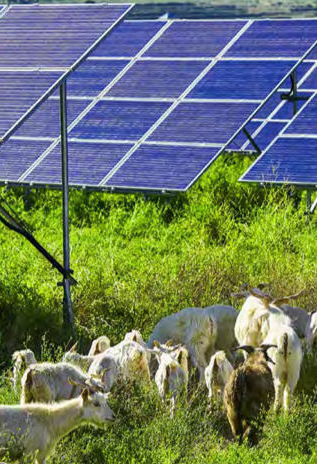
Biodiversity protection
How do we protect and preserve biodiversity on some of our more flagship projects?
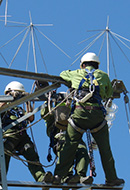
Monitoring flora and fauna
We work on prevention and restoration of areas where we operate.
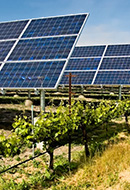
Agrovoltaics
Dual land use for agriculture and energy relieves pressure on ecosystems.

Certifications and verifications
Environmental certifications classified by facility and by certification standard.




